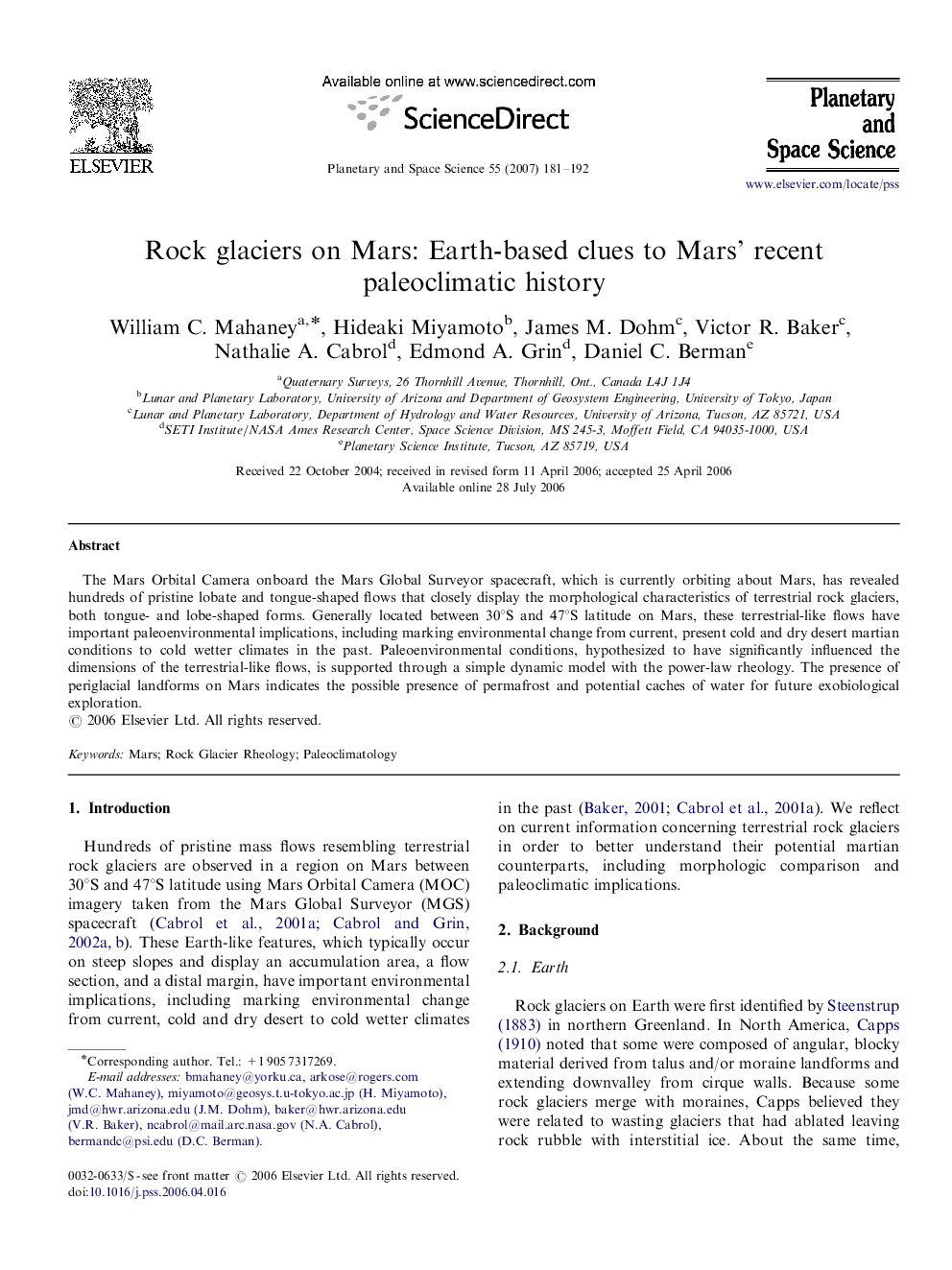| Article ID | Journal | Published Year | Pages | File Type |
|---|---|---|---|---|
| 1782320 | Planetary and Space Science | 2007 | 12 Pages |
The Mars Orbital Camera onboard the Mars Global Surveyor spacecraft, which is currently orbiting about Mars, has revealed hundreds of pristine lobate and tongue-shaped flows that closely display the morphological characteristics of terrestrial rock glaciers, both tongue- and lobe-shaped forms. Generally located between 30°S and 47°S latitude on Mars, these terrestrial-like flows have important paleoenvironmental implications, including marking environmental change from current, present cold and dry desert martian conditions to cold wetter climates in the past. Paleoenvironmental conditions, hypothesized to have significantly influenced the dimensions of the terrestrial-like flows, is supported through a simple dynamic model with the power-law rheology. The presence of periglacial landforms on Mars indicates the possible presence of permafrost and potential caches of water for future exobiological exploration.
